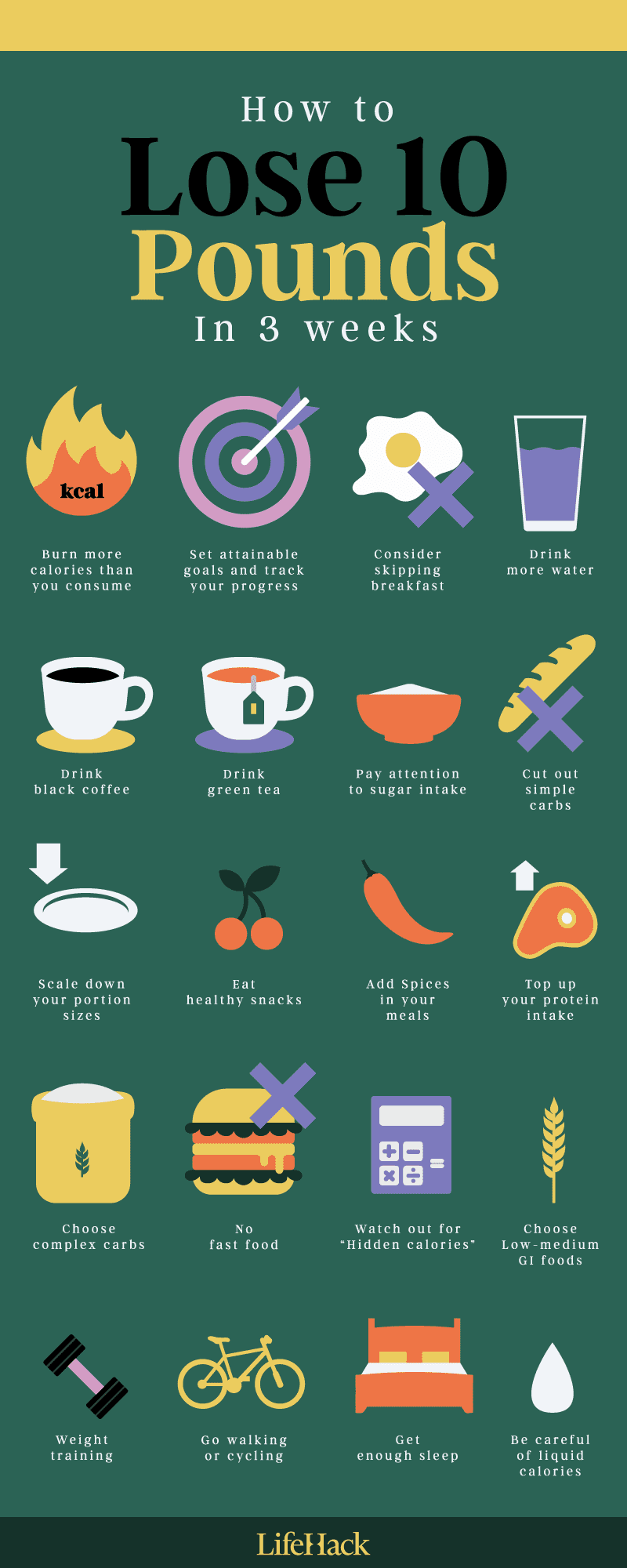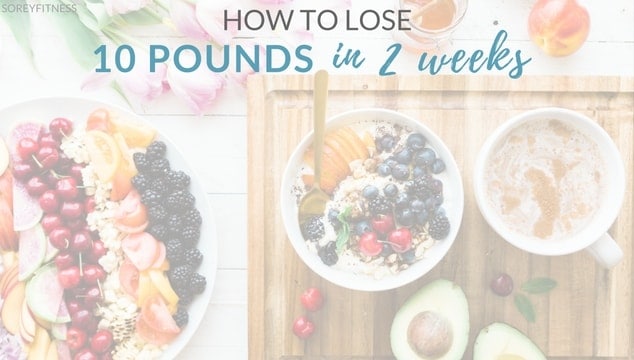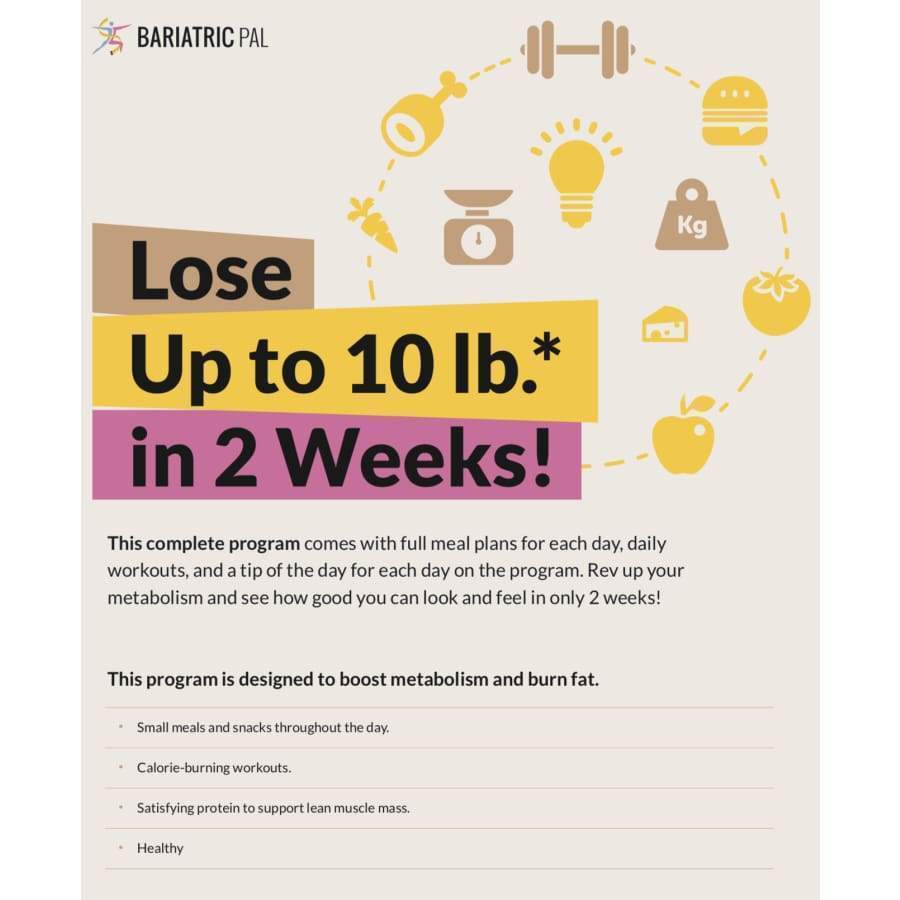Looking to lose weight? Check out our article “Effective Tips for Losing 10 Pounds in 2 Weeks” for practical strategies to reach your goal. Start your journey now!
Are you looking to shed some weight and achieve a healthier, fitter body? If so, then the article “Effective Tips for Losing 10 Pounds in 2 Weeks” is exactly what you need. In this informative piece, you will discover practical strategies and evidence-based methods to help you reach your weight loss goal effectively and efficiently. Whether you have a special occasion coming up or simply want to kick-start a healthier lifestyle, these tips will provide you with the guidance and motivation you need to lose those excess pounds in just two weeks. So, let’s get started on your journey towards a healthier you!

Set Realistic Goals
Evaluate your current weight and health
Before embarking on any weight loss journey, it is crucial to evaluate your current weight and overall health. Take a moment to step on a scale and assess where you stand. This will give you a starting point and help you track your progress along the way. Additionally, consider factors such as your body mass index (BMI), any existing medical conditions, and any medications you may be taking that could affect your weight loss efforts. Understanding your current weight and health will allow you to set realistic goals.
Consult with a healthcare professional
To ensure that your weight loss journey is safe and effective, it is highly recommended to consult with a healthcare professional beforehand. A healthcare professional, such as a doctor or a registered dietitian, can provide personalized guidance based on your unique circumstances. They can assess your overall health, evaluate any underlying medical conditions, and suggest a weight loss plan that suits your needs. They can also monitor your progress and make any necessary adjustments along the way.
Set a specific and achievable target
When setting weight loss goals, it is important to be specific and realistic. Instead of aiming to lose a generic amount of weight, such as “losing some pounds,” set a specific target. For example, you may want to aim to lose 10 pounds. This gives you a clear goal to work towards and helps you stay motivated. However, it is essential to ensure that your target is achievable within a reasonable timeframe. Losing 10 pounds in 2 weeks, for example, may not be realistic or healthy for everyone. Set a target that is both attainable and sustainable for your individual circumstances.
Create a Calorie Deficit
Calculate your daily calorie needs
To create a calorie deficit, you need to know how many calories your body needs to maintain its current weight. This can be calculated by considering various factors such as your age, gender, weight, height, and activity level. There are online calculators and apps available that can help you determine your daily calorie needs. Once you have this information, you can move forward with creating a calorie deficit.
Choose a calorie deficit that suits your needs
A calorie deficit occurs when you consume fewer calories than you expend. This imbalance prompts your body to use stored fat as energy, ultimately leading to weight loss. However, it is important to choose a calorie deficit that suits your needs and doesn’t compromise your health. A deficit of 500-1000 calories per day is generally considered safe and effective for most individuals. This can result in a gradual and sustainable weight loss of 1-2 pounds per week. Avoid excessively low calorie intake or crash diets, as they can be detrimental to your health and hinder your weight loss efforts.
Focus on nutrient-dense and filling foods
When creating a calorie deficit, it is crucial to make every calorie count. Opt for nutrient-dense foods that provide essential vitamins, minerals, and fiber without adding excessive calories. These include fruits, vegetables, lean proteins, whole grains, and healthy fats. Additionally, choose foods that are filling and satiating, as they can help curb hunger and prevent overeating. Incorporate foods high in fiber, such as legumes, whole grains, and vegetables, as they can help you feel full for longer periods of time.
Watch portion sizes
Controlling portion sizes is essential when creating a calorie deficit. Even if you’re consuming nutritious foods, consuming them in large quantities can lead to weight gain or hinder weight loss progress. Invest in measuring cups, a kitchen scale, or use visual cues to estimate appropriate portion sizes. Be mindful of serving sizes mentioned on food labels and try not to exceed them. Over time, practicing portion control will become a habit and contribute to effective weight loss.
Keep a food diary
Keeping track of what you eat can be incredibly helpful when trying to create a calorie deficit. A food diary or a mobile app can help you monitor your calorie intake and identify any patterns or habits that may be affecting your weight loss progress. Record everything you eat and drink throughout the day, including snacks and beverages. Be accurate and honest with your entries to ensure that you have an accurate representation of your overall calorie intake. A food diary can also help you identify any areas for improvement and facilitate accountable and mindful eating.

Follow a Balanced Diet
Limit processed and sugary foods
When aiming for weight loss, it is crucial to limit your consumption of processed and sugary foods. These foods are often high in calories and low in nutrients, contributing to weight gain and potential health issues. Processed foods, such as fast food, packaged snacks, and sugary beverages, tend to be packed with added sugars, unhealthy fats, and excessive sodium. Instead of relying on these options, opt for whole, unprocessed foods that are rich in nutrients and support your overall health.
Increase consumption of fruits and vegetables
Fruits and vegetables should have a prominent place in your weight loss diet plan. They are low in calories and high in essential vitamins, minerals, and fiber. Incorporating a variety of fruits and vegetables into your meals and snacks can help control your calorie intake, promote satiety, and provide your body with the necessary nutrients to function optimally. Aim to include a colorful array of fruits and vegetables in your diet to reap the benefits of their nutritional content.
Incorporate lean protein sources
Protein is a crucial macronutrient when it comes to weight loss. It has a high satiety factor, meaning it can help you feel full for longer periods of time. Additionally, protein plays a crucial role in muscle maintenance and repair, which is important for overall health and metabolism. Include lean protein sources in your meals, such as skinless poultry, fish, tofu, legumes, and low-fat dairy products. These options provide the necessary protein without adding excessive calories or unhealthy fats.
Choose whole grains
Whole grains are an excellent source of fiber, vitamins, minerals, and antioxidants. They can help regulate blood sugar levels, promote healthy digestion, and contribute to feelings of fullness. Incorporate whole grains into your diet by choosing options like whole wheat bread, brown rice, quinoa, oats, and whole grain pasta. These choices offer more nutrients compared to refined grains and can support your weight loss goals effectively.
Include healthy fats
Contrary to popular belief, not all fats are bad for you. In fact, healthy fats are an essential part of a balanced diet and can support weight loss efforts. Healthy fats, such as those found in avocados, nuts, seeds, and olive oil, provide satiety, promote heart health, and support the absorption of fat-soluble vitamins. However, it is important to consume them in moderation, as they are calorie-dense. Incorporate small portions of healthy fats into your meals and snacks to aid in weight loss without compromising your overall health.
Stay hydrated
Hydration plays a significant role in weight loss and overall well-being. Drinking an adequate amount of water throughout the day can help control your appetite, improve metabolism, and support proper digestion. Often, thirst can be mistaken for hunger, leading to unnecessary snacking or overeating. To ensure you stay hydrated, drink water regularly, and consider incorporating herbal teas or infused water for added flavor. Aim to drink at least 8 cups of water per day, or more if you engage in intense physical activity or live in a hot climate.
Practice Intermittent Fasting
Understand the concept of intermittent fasting
Intermittent fasting is an eating pattern that cycles between periods of fasting and eating. It does not necessarily restrict the types of foods you consume but instead focuses on when you eat. There are various intermittent fasting methods, but the most common ones include the 16/8 method, where you fast for 16 hours and restrict your eating to an 8-hour window, and the 5:2 method, where you consume a normal diet for 5 days and restrict calorie intake on the remaining 2 days. Intermittent fasting can be an effective tool for weight loss, as it can help control calorie intake and optimize insulin levels.
Choose an intermittent fasting method
When engaging in intermittent fasting, it is important to choose a method that suits your lifestyle and preferences. The 16/8 method, also known as time-restricted feeding, is a popular choice for many individuals. It involves fasting for 16 hours, typically including the hours spent sleeping, and restricting your eating to an 8-hour window. This can be done by skipping breakfast or having an early dinner. The 5:2 method, on the other hand, involves restricting calorie intake to 500-600 calories for two non-consecutive days of the week while following a regular diet on the remaining days. Explore different intermittent fasting methods and choose the one that works best for you.
Plan your eating and fasting periods
To successfully practice intermittent fasting, it is important to plan your eating and fasting periods ahead of time. Determine which hours of the day you will fast and which hours you will eat. If you choose the 16/8 method, for example, you may decide to have your eating window between 12 pm and 8 pm, fasting for the remaining 16 hours. Establishing a routine and sticking to it can help your body adjust to the new eating pattern and make intermittent fasting more sustainable in the long run.
Stay hydrated during fasting periods
During fasting periods, it is important to stay hydrated to maintain your overall health and well-being. Although you may not be consuming any calories, drinking water, herbal tea, or black coffee is generally allowed and can help keep you hydrated. Avoid sugary drinks or adding excessive cream or sweeteners, as they can break your fast. Remember that intermittent fasting is not about calorie restriction, but rather about limiting your eating to specific time windows.
Be mindful of potential side effects
While intermittent fasting can be an effective weight loss strategy for many individuals, it may not be suitable for everyone. Some people may experience side effects such as fatigue, low energy levels, irritability, and difficulty concentrating. If you have any underlying health conditions, are pregnant or breastfeeding, or have a history of disordered eating, it is important to consult with a healthcare professional before incorporating intermittent fasting into your weight loss plan. They can provide personalized recommendations and ensure it is a safe and appropriate approach for you.

Engage in Regular Exercise
Include cardio exercises in your routine
Cardiovascular exercises, also known as aerobic exercises, are an important component of any weight loss plan. These exercises increase your heart rate, boost metabolism, and burn calories, helping you create a calorie deficit. Engage in activities such as brisk walking, jogging, cycling, swimming, or dancing. Aim for at least 150 minutes of moderate-intensity cardio exercises per week, or 75 minutes of vigorous-intensity exercises. Start gradually and gradually increase the duration and intensity of your workouts as your fitness level improves.
Incorporate strength training exercises
While cardio exercises are essential for weight loss, incorporating strength training exercises can further enhance your results. Strength training builds lean muscle mass, which can increase your metabolism and help you burn more calories throughout the day, even at rest. Include exercises such as weightlifting, resistance band workouts, bodyweight exercises, or yoga poses that target major muscle groups. Aim for at least two or more days of strength training per week, allowing adequate rest days for muscle recovery and growth.
Try high-intensity interval training (HIIT)
High-intensity interval training, also known as HIIT, involves short bursts of intense exercise followed by brief recovery periods. This type of training has been shown to be effective for weight loss and improving overall fitness levels. HIIT workouts can be done with various exercises, such as sprint intervals, cycling, or bodyweight exercises. The intense bursts of exercise elevate your heart rate, burn more calories, and improve cardiovascular endurance. Incorporate HIIT workouts into your exercise routine for a challenging and time-efficient way to boost your weight loss efforts.
Stay active throughout the day
In addition to structured workouts, it is important to stay active throughout the day to support weight loss. Incorporate movement into your daily routine by taking the stairs instead of the elevator, walking or biking instead of using a car for short distances, and standing or stretching during prolonged periods of sitting. Small lifestyle changes like these can contribute to increased calorie expenditure and help you reach your weight loss goals.
Find activities you enjoy
To maintain motivation and make exercise a sustainable habit, it is crucial to find activities you enjoy. Engaging in activities that you find fun and fulfilling will make it easier to stick to your exercise routine in the long run. Experiment with different types of exercises, such as dance classes, team sports, hiking, or swimming, until you find something that brings you joy. Make exercise a part of your lifestyle rather than a chore, and the benefits will extend beyond weight loss.
Monitor and Manage Stress
Understand the relationship between stress and weight
Stress can have a significant impact on your weight loss journey. When you’re stressed, your body releases a hormone called cortisol, which can increase appetite and lead to overeating or cravings for unhealthy foods. Additionally, stress may interfere with your sleep patterns and hinder your ability to make healthy choices. Understanding the relationship between stress and weight can help you take steps to manage stress effectively and reduce its impact on your weight loss efforts.
Identify and reduce sources of stress
To manage stress effectively, it is important to identify the sources of stress in your life. These may include work-related pressures, relationship issues, financial concerns, or personal responsibilities. Once you’ve identified the sources of stress, brainstorm ways to reduce or eliminate them. This may involve setting boundaries, seeking support from friends or family, or seeking professional help when needed. Taking proactive steps to decrease stress in your life can improve your overall well-being and support your weight loss goals.
Practice stress-management techniques
When faced with stressful situations, practicing stress-management techniques can help you cope and prevent stress from derailing your weight loss efforts. Incorporate relaxation techniques into your daily routine, such as deep breathing exercises, meditation, yoga, or mindfulness practices. Engage in activities that help you unwind and find moments of calm, such as taking a soothing bath, listening to calming music, or spending time in nature. Find what works best for you and make stress management a priority in your weight loss journey.
Get enough sleep
Adequate sleep is essential for overall health and plays a crucial role in weight management. Lack of sleep can disrupt hormonal balance, leading to increased hunger and cravings, decreased metabolism, and poor decision-making when it comes to food choices. Aim to get 7-8 hours of quality sleep each night to support your weight loss efforts. Establish a consistent sleep routine, create a sleep-friendly environment free from distractions, and practice relaxation techniques before bed to improve the quality of your sleep.
Consider relaxation exercises
Relaxation exercises, such as progressive muscle relaxation, guided imagery, or aromatherapy, can be beneficial for managing stress and promoting relaxation. Progressive muscle relaxation involves tensing and then relaxing different muscle groups in your body to release tension and promote relaxation. Guided imagery uses visualization techniques to create a calming and peaceful mental space. Aromatherapy involves using essential oils to create a soothing environment and promote relaxation. Incorporate these relaxation exercises into your daily routine or whenever you feel stressed to find relief and maintain a healthy mindset.

Get Sufficient Sleep
Understand the importance of sleep for weight loss
Sleep plays a vital role in weight loss and overall well-being. When you’re sleep-deprived, hormonal imbalances occur, leading to increased hunger, cravings for unhealthy foods, and decreased metabolism. Additionally, lack of sleep affects your energy levels and motivation to engage in physical activity, making it challenging to stick to your weight loss plan. Prioritizing sufficient and quality sleep is crucial for optimizing your weight loss efforts.
Evaluate your sleep habits and environment
To improve your sleep quality, start by evaluating your sleep habits and environment. Assess factors such as your bedtime routine, the comfort of your sleep surface, noise levels, and light exposure in your bedroom. Create a sleep-friendly environment by making your bedroom dark, quiet, and cool. Invest in a comfortable mattress and pillow that support your sleeping position. Establish a consistent bedtime routine that includes relaxation techniques to signal your body that it’s time to wind down and prepare for sleep.
Establish a consistent sleep schedule
Maintaining a consistent sleep schedule is essential for regulating your body’s internal clock and optimizing sleep quality. Aim to go to bed and wake up at the same time every day, even on weekends. This consistency helps your body establish a natural sleep-wake cycle and promotes better sleep overall. Avoid large discrepancies in your sleep schedule, as irregular sleep patterns can disrupt your circadian rhythm and affect the quality of your sleep.
Create a relaxing bedtime routine
Developing a relaxing bedtime routine can signal your body and mind that it’s time to unwind and prepare for sleep. Allow yourself at least 30 minutes before bed to engage in calming activities that help you relax. This may include reading a book, taking a warm bath, practicing mindfulness meditation, or listening to soft and soothing music. Avoid stimulating activities or exposure to bright screens before bed, as they can interfere with your ability to fall asleep.
Avoid stimulants before bed
Stimulants such as caffeine, nicotine, and alcohol can disrupt your sleep patterns and make it difficult to fall asleep or stay asleep. Limit your consumption of these substances, especially in the hours leading up to bedtime. Avoid caffeinated beverages like coffee, tea, and energy drinks in the late afternoon and evening. Be mindful of the potential effects of alcohol on sleep as well, as it may initially make you drowsy but can lead to disrupted sleep patterns later in the night.
Boost Metabolism Naturally
Eat regular meals and snacks
Eating regular meals and snacks throughout the day can help boost your metabolism and support weight loss. When you skip meals or go for long periods without eating, your body may go into “starvation mode,” slowing down your metabolism to conserve energy. To keep your metabolism revved up, aim to eat three balanced meals and one or two snacks per day. Each meal or snack should include a combination of protein, fiber, and healthy fats to provide sustained energy and keep your metabolism active.
Include metabolism-boosting foods
Certain foods have been shown to naturally boost metabolism and increase calorie expenditure. Include these metabolism-boosting foods in your diet to enhance your weight loss efforts. Spicy foods containing capsaicin, such as chili peppers, can temporarily increase metabolism and promote fat burning. Green tea contains catechins, which have been found to increase metabolism and enhance fat oxidation. Protein-rich foods, such as lean meats, fish, eggs, tofu, and legumes, require more energy to digest, thereby boosting metabolism. Including these foods in your diet can provide a small but meaningful boost to your metabolic rate.
Stay active throughout the day
In addition to structured exercise, staying active throughout the day can help boost your metabolism. Engage in activities that keep you moving, such as walking, taking the stairs, doing household chores, or gardening. Avoid excessive sedentary behavior, such as prolonged sitting or lying down for extended periods. These small movements can add up and contribute to increased calorie expenditure throughout the day, ultimately boosting your metabolism.
Drink green tea
Green tea has been shown to have several health benefits, including boosting metabolism. It contains compounds called catechins that can increase fat oxidation and thermogenesis, the process of heat production in the body. Drinking green tea regularly, either as a hot or cold beverage, can provide a mild metabolic boost and support your weight loss goals. However, it is important to note that the effects of green tea on metabolism are modest, and it should be incorporated as part of an overall healthy lifestyle.
Get enough vitamin D
Vitamin D plays a crucial role in many bodily functions, including metabolism. Low levels of vitamin D have been associated with weight gain and impaired metabolic function. Ensure that you’re getting enough vitamin D through sun exposure (with appropriate sun protection), fortified foods, or supplements if necessary. Consult with a healthcare professional to determine the appropriate vitamin D levels for your specific needs.

Stay Consistent and Motivated
Track your progress
Tracking your progress is a crucial part of staying consistent and motivated throughout your weight loss journey. Keep a record of your weight, measurements, and body composition changes on a regular basis. This can be done weekly or bi-weekly to clearly see your progress over time. Additionally, consider tracking other metrics such as energy levels, sleep quality, and overall mood. Seeing positive changes in these areas can provide further motivation and reinforce your commitment to a healthy lifestyle.
Find a support system
Building a support system can significantly impact your motivation and ability to stick to your weight loss goals. Surround yourself with individuals who support and encourage your efforts. This can include family members, friends, or online communities dedicated to weight loss and healthy living. Share your goals with them, seek their advice, and celebrate your successes together. Having a support system can provide accountability, motivation, and a sense of belonging throughout your weight loss journey.
Reward yourself for reaching milestones
Celebrate your achievements along the way by rewarding yourself for reaching milestones. However, it is important to choose non-food rewards to avoid associating food with emotional gratification. Treat yourself to activities or items that support your well-being and motivate you to continue on your weight loss journey. This can include new workout clothes, a relaxing spa day, a favorite hobby, or a weekend getaway. Recognizing your hard work and progress will keep you motivated and excited to achieve future goals.
Stay positive and focus on the bigger picture
Maintaining a positive mindset is key to staying motivated and consistent with your weight loss efforts. Remember that weight loss is a gradual process and that setbacks are normal. Avoid self-criticism or negative self-talk, as this can hinder your progress. Focus on the bigger picture and the positive changes you’re making for your health and well-being. Embrace the journey and celebrate every step forward, no matter how small.
Stay patient with yourself
Weight loss is not a linear process, and everyone’s journey is unique. It is important to stay patient with yourself and understand that sustainable weight loss takes time. Avoid falling into the trap of crash diets or rapid weight loss methods that promise quick results but are not sustainable in the long run. Embrace the process, trust in your efforts, and stay consistent with healthy habits. With time and dedication, you will reach your weight loss goals and maintain a healthy lifestyle.
Maintain a Healthy Lifestyle
Avoid crash diets and unhealthy weight loss methods
Crash diets and unhealthy weight loss methods may promise quick results, but they often come at the expense of your overall health and well-being. These approaches typically involve severe calorie restriction, elimination of entire food groups, or relying on supplements or meal replacements. While they may result in short-term weight loss, they are difficult to sustain and can lead to nutrient deficiencies, rebound weight gain, and a negative relationship with food. Instead, focus on making sustainable changes to your diet and lifestyle that promote long-term weight management.
Make sustainable changes
When it comes to weight loss, sustainability is key. Instead of following restrictive diets or temporary fixes, make long-lasting changes to your eating habits and lifestyle. Focus on incorporating nutrient-dense foods, practicing portion control, and finding an exercise routine that you enjoy and can maintain. Aim to create a balanced and varied diet that includes all food groups in appropriate portions. Find ways to make healthier choices enjoyable by experimenting with new recipes, exploring different types of physical activity, and seeking support from others on a similar path.
Continue practicing healthy habits
Weight loss should not be a one-time achievement but rather an ongoing commitment to a healthy lifestyle. Once you’ve reached your weight loss goals, continue practicing the healthy habits you’ve developed along the way. Maintain regular exercise, a balanced diet, and mindful eating to manage your weight effectively and support your overall health. Remember that weight management is a lifelong journey that requires consistency and commitment.
Focus on long-term weight management
Weight loss is just the first step toward achieving a healthy lifestyle. To maintain your weight loss over the long term, it is important to focus on weight management strategies. This includes setting realistic goals, monitoring your progress, making adjustments when necessary, and staying mindful of your eating and activity habits. Incorporating regular exercise, balanced meals, and healthy habits into your daily routine will help you maintain a healthy weight and improve your overall well-being.
Listen to your body
Ultimately, your body knows best. Listen to its cues and signals to guide your weight loss and overall health journey. Pay attention to your hunger and fullness cues, eat when you’re hungry, and stop when you’re satisfied. Be mindful of emotional eating triggers and find alternative ways to cope with stress or other emotional factors. Your body’s needs may vary from day to day, so be flexible and adaptable with your eating patterns and exercise routine. By tuning in and respecting your body’s signals, you can cultivate a healthy and sustainable relationship with food and achieve long-term weight management success.
Incorporating these effective tips into your weight loss journey can help you achieve your goal of losing 10 pounds in 2 weeks. Remember to set realistic goals, create a calorie deficit, follow a balanced diet, practice intermittent fasting, engage in regular exercise, manage stress, prioritize sleep, boost metabolism naturally, stay consistent and motivated, and maintain a healthy lifestyle. It is important to consult with a healthcare professional before making any significant changes to your diet or exercise routine, especially if you have any underlying health conditions. Stay committed, be patient with yourself, and celebrate your progress along the way. With dedication and perseverance, you can achieve your weight loss goals and cultivate a healthier and happier life.
